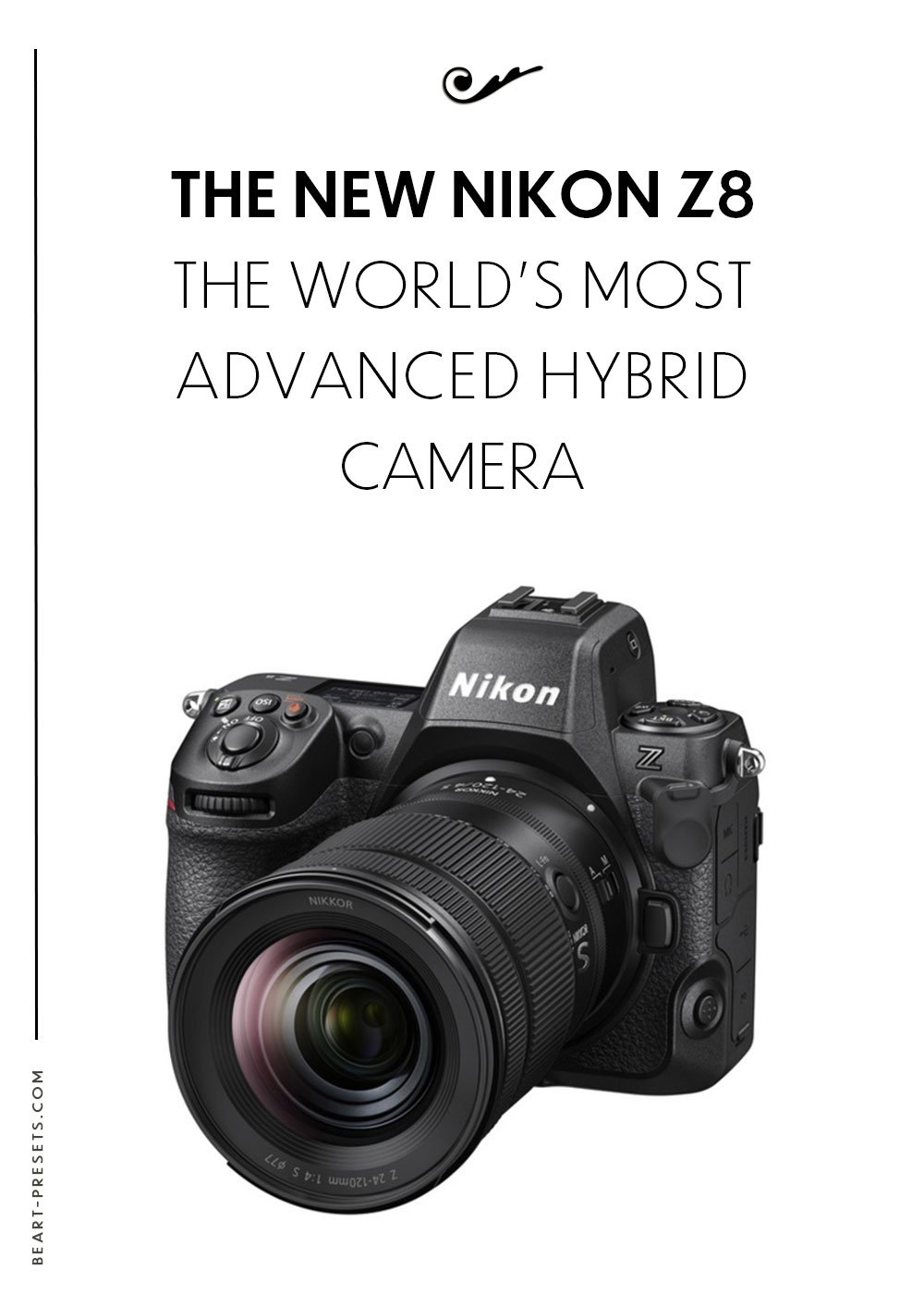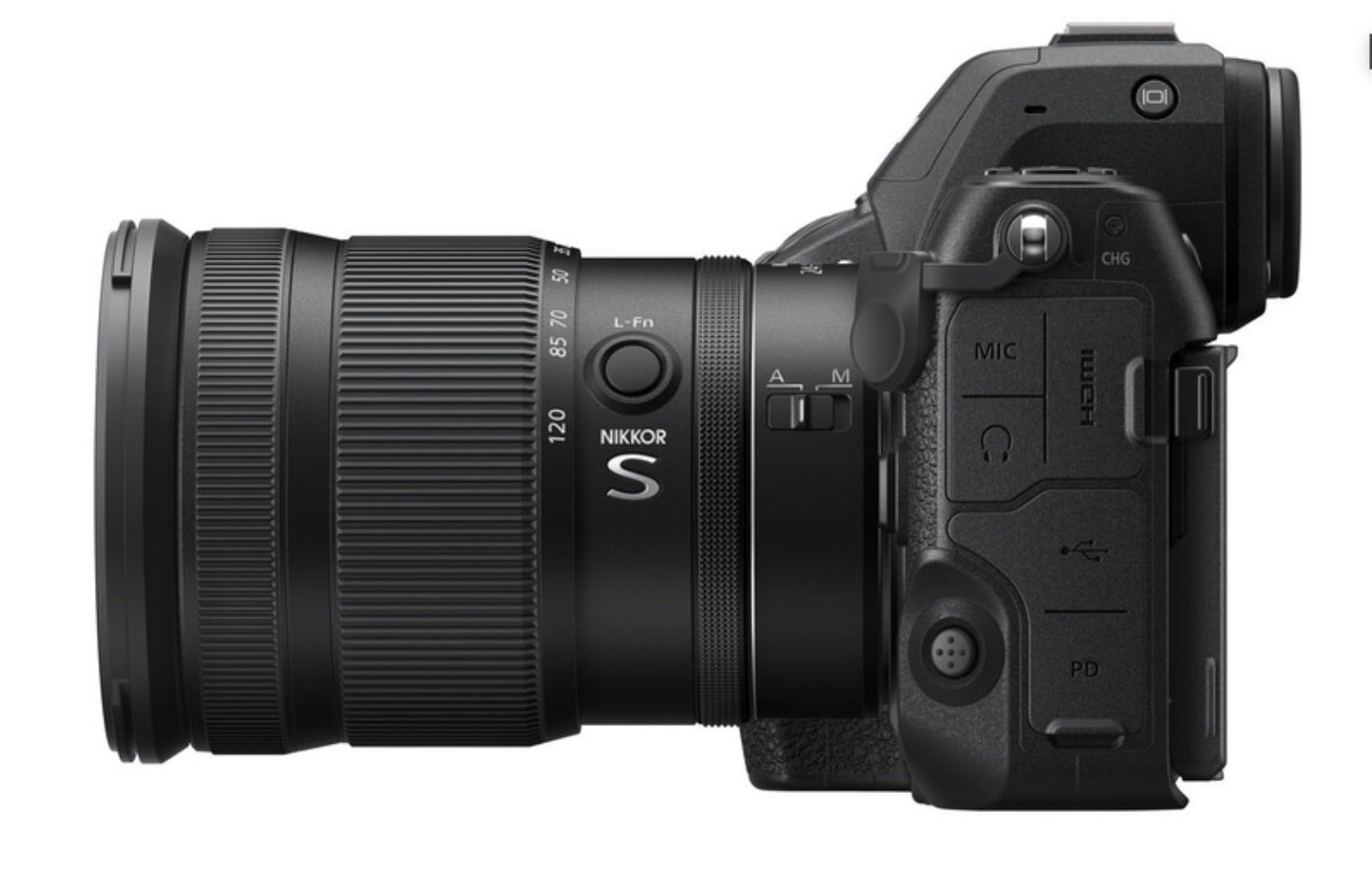The New Nikon Z8: The World's Most Advanced Hybrid Camera
With a 30% smaller physical factor than the Z9, Nikon has unveiled the Z8, a full-frame mirrorless camera that is essentially identical to the Z9.
In a "mirrorless" package that is 15% smaller than the D850, the new device is also being positioned by the manufacturer as a "true successor" to the D850.
If the Z8 could be reduced to a single, simple idea, it would be as follows: Without the built-in vertical battery grip, the Z8 is the Z9 instead. Although there are a few minor variations, the fundamental design of the cameras is largely the same. The Z 8 can shoot 8K at up to 60 frames per second and has the same 45MP sensor with no physical shutter.
The internals of the Z 9's camera, which make it such a powerful camera, are used in the Z 8 as well. It has a 45.7-megapixel full-frame back-illuminated (BSI) multi-layer sensor with an ultra-fast scanning speed and an EXPEED 7 image processor, which fully replaces the physical-mechanical shutter.
With this setup, you may film practically rolling shutter distortion-free and in total silence. Over years of use, the removal of physical components also lessens wear and tear. Additionally, the Z8 can capture 12-bit RAW footage at a range of frame rates and formats.
The Z8 has an airplane tracking capability, which is the only difference in the autofocus mechanism, which is otherwise nearly identical. Overall, according to Nikon, it is the most potent and precise autofocus system yet created using deep learning. According to the manufacturer, focusing is quick and dependable, and a variety of functions are available, such as a fully automatic AF zone, Nikon 3D tracking, and fully adjustable wide-angle autofocus.
According to Nikon, these modes employ sophisticated object detection for photos and videos, which can now also recognize different kinds of aircraft in addition to humans, animals, birds, trains, vehicles, motorbikes, and bicycles.
The Z9's 3.2-inch quad-axis horizontal-vertical tilting touchscreen is also used for the device's rear LCD. The Z8 can also produce 10-bit HEIF files, which according to the developers, are superior to JPEG because they are around the same size but have a billion more colors.
The Z8 is capable of shooting in both the new HLG RAW option and Nikon's high-performance RAW format for use "on compatible devices."
The Nikon Z8 contains features like skin tone accuracy control that are specifically suited for portrait photographers. Additionally, it includes an enhanced white balance and a new skin-smoothing feature.
The Z8 can shoot continuously at 20 frames per second (fps) in RAW and JPEG at full resolution, 30 fps in JPEG at full resolution, and 60 fps in cropped JPEG at full resolution for dynamic shooting. In high-speed shooting, the Z8 can also capture 11-megapixel JPEG files at up to 120 frames per second. Pre-capture, another feature of the camera, turns on the buffer even before the shutter button is fully depressed.
Last but not least, the Z8 boasts image stabilization that reduces vibration, which is allegedly improved with "Synchro VR" to achieve up to six stops of compensation with compatible lenses.
The Z8 is a really capable instrument for creating videos, not just a camera. As previously established, Nikon offers "extended" 4K capture choices ranging from 24p and 30p oversampled to 120p with audio, as well as the ability to shoot 8K at 60fps in N-RAW.
The camera has 125 minutes of 4K at 60p and 90 minutes of 8K at 30p of recording time. Naturally, the Z 8 can capture 12-bit RAW video in ProRes RAW 4K60p or as high as 8K60p in N-RAW.
Nikon's RAW video format, N-RAW, is roughly 50% smaller and also generates a 1080p proxy file intended to facilitate editing. According to Nikon, recording RAW video enables the most image data and the highest bit rate for the widest possible scope and versatility.
Video can now be recorded in 10-bit ProRes 4:2:2 HQ for considerably more color flexibility. Additionally, the camera has better N-Log, HLG, and a straightforward color profile with smooth gradation.
The Z8's hardware includes two USB-C ports specifically designed for charging (PD or Power Delivery) and transferring data to accessories. A full-size HDMI port is also included on the camera.
A high-resolution 4K upscaling feature, a highly visible red REC frame indicator, the ability to focus linearly on many Nikkor Z lenses, ISO fine control, adjustable AF speed tracking, time code sync, and 24-bit stereo audio are also included in the extensive firmware update that gave rise to the Z 9 last year.
Given that Nikon is advertising the Z 8 as a professional camera, its construction should be excellent. Although it's not quite a Z 9, Nikon has totally sealed the camera, making it, according to the manufacturer, more durable than the D850. The camera's materials include a new professional-grade carbon fiber composite and magnesium alloy, which Nikon claims are utilized in the design to reduce weight and enhance durability. It can work in temperatures as low as -10 degrees Celsius.
With illuminated keys, a warm display color option, viewfinder brightness adjustment, and Starlight View, which enables focusing down to -9 EV, the Z8 makes shooting in low light simple.
The Z8 and Z9 are different in that the Z8 has one CFexpress Type B port instead of an extra SD card slot, which Nikon claims was done to ensure widespread availability.
The Z8 will support the MB-N12 grip, which will offer controls and around 1.8 times the battery life. According to Nikon, the handle has the same level of weather resistance as the camera and supports hot-swappable batteries.
The Nikon Z8 will be offered for $4,000 on May 25. In May, the MB-N12 battery grip will cost $350.





















